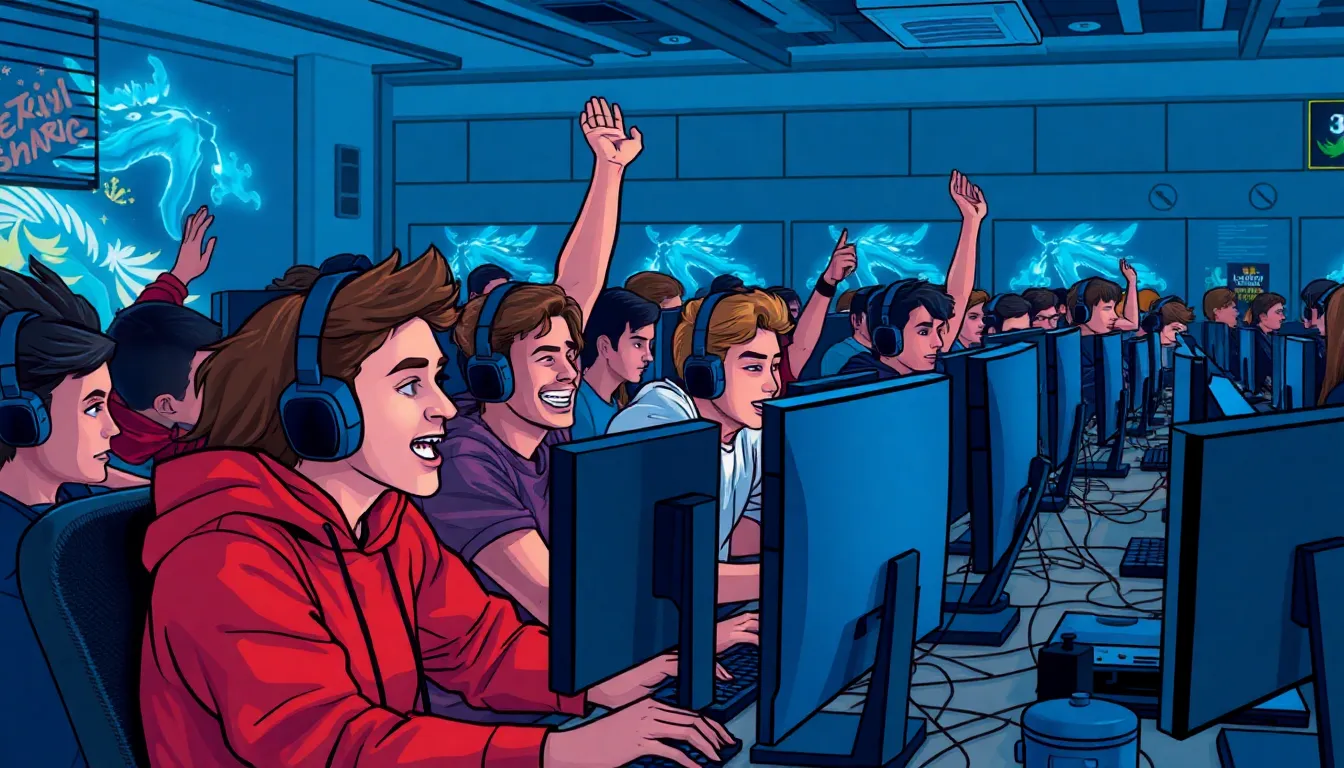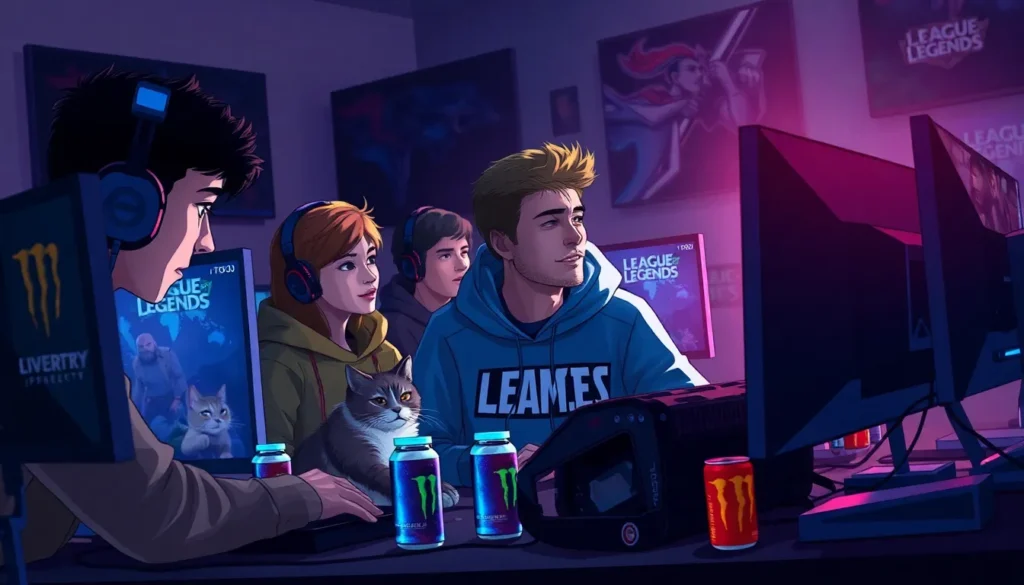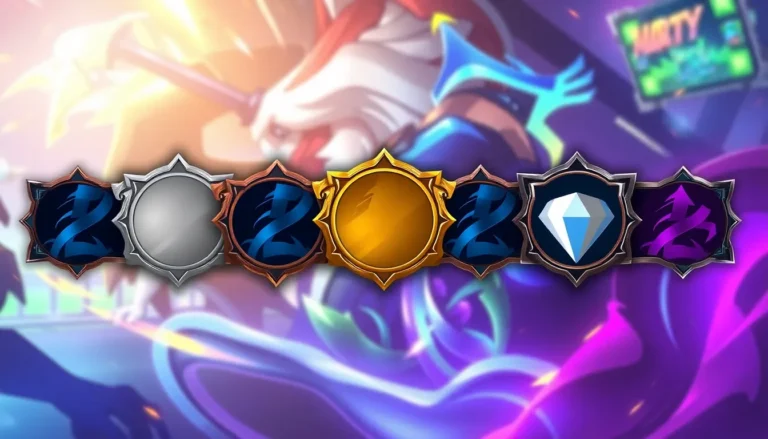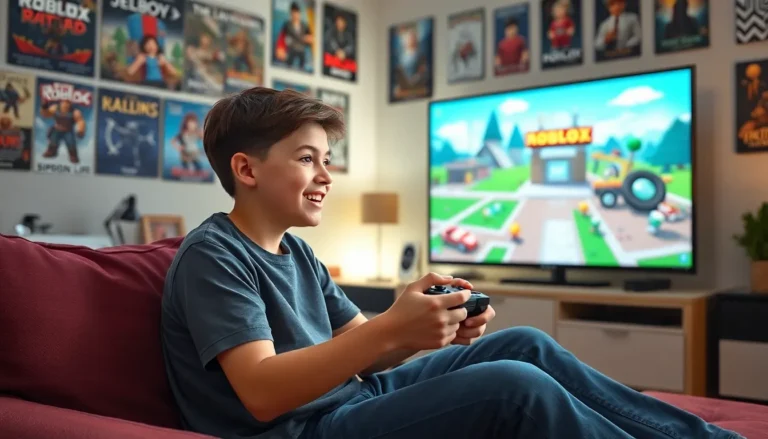Table of Contents
ToggleIn the ever-evolving world of gaming, few titles have captured hearts and minds like League of Legends. But is it still the titan it once was, or is it quietly fading into the digital sunset? With memes circulating faster than a well-timed flash, fans are left wondering if the game’s glory days are behind it.
As players debate whether to hang up their summoner’s rift boots, it’s crucial to dive into the numbers, trends, and community buzz. Is League of Legends on the decline, or is it simply going through a mid-life crisis? Join the conversation as we explore the signs, the stats, and maybe even a few cat memes along the way. After all, who doesn’t love a good laugh while pondering the fate of their favorite game?
Overview of League of Legends
League of Legends, developed by Riot Games, remains one of the most influential titles in the gaming industry since its launch in October 2009. The Multiplayer Online Battle Arena (MOBA) game features intense 5v5 battles, requiring teamwork, strategy, and skill. Players control unique champions, each with distinct abilities and roles in the game.
Statistics show that League of Legends consistently attracts millions of players worldwide. In 2023, the player base reportedly exceeded 115 million monthly active users. Esports tournaments also bolster the game’s popularity, with events like the League of Legends World Championship drawing substantial viewership. The 2022 finals alone attracted over 5.1 million peak viewers.
Changes to gameplay and the introduction of new champions sustain player interest. Regular updates and patches balance gameplay, keeping the competitive scene dynamic. Community feedback often influences development, allowing players to feel engaged and heard.
Despite minor fluctuations in player activity, League of Legends maintains a dedicated community. Forums and social media platforms buzz with discussions, memes, and fan-created content. Supportive fan events promote camaraderie among players, showcasing the game’s cultural impact.
Constant competition from emerging titles poses a challenge. Market trends indicate a rise in battle royale games and other genres. Players occasionally explore alternatives, yet the enduring appeal of League of Legends keeps many returning to the Rift.
The game’s strategic depth and community engagement ensure its relevance and provide a platform for continued growth and adaptation. Analyzing current trends aids in understanding its ongoing status as a leading title in online gaming.
Current Player Statistics

Current player statistics reflect the ongoing popularity of League of Legends. Recent data shows over 115 million monthly active users in 2023, indicating strong community engagement.
Global Player Trends
Global trends reveal fluctuations in player numbers. Many players return during significant updates or esports events, which spike interest. Daily player counts average around 8 million, with peak historical records exceeding 12 million. Strong competition from newer titles impacts engagement, but the game’s steady updates and community events maintain interest. Despite challenges, the title remains a top choice in the MOBA genre.
Regional Variations
Regional statistics indicate diverse engagement levels. North America and Europe lead in player numbers due to established gaming cultures. Asian markets, particularly South Korea and China, showcase extraordinary commitment, with millions participating in daily matches. Unique regional events and tailored content often enhance local interest. While player bases may differ, overall engagement remains robust across these regions, showcasing the game’s global reach.
Reasons Behind Declining Interest
Declining interest in League of Legends can be attributed to various factors affecting player engagement.
Gameplay Changes
Frequent gameplay changes can alienate long-time players. Balancing patches often lead to shifts in champion viability, causing frustration. New features may not resonate with everyone, resulting in mixed feelings within the community. Players seeking consistency might feel overwhelmed by constant adjustments. A survey shows 35% of players express dissatisfaction with recent updates, reflecting a growing divide between casual and competitive gamers.
Competition from Other Games
Emerging competitors add pressure to League of Legends’ player base. Titles like Valorant and Dota 2 attract significant numbers, capturing attention with their fresh mechanics. Over 25% of former players cite boredom with League’s gameplay as a reason for switching. Engagement with other genres, such as battle royale or open-world games, contributes to a broader shift in player interests. As new games rise in popularity, League of Legends faces an uphill battle to retain its loyal audience.
Community Response
Community response to League of Legends showcases a mix of dedication and frustration. Players actively engage in discussions across forums and social media, highlighting their thoughts on gameplay changes and balance adjustments.
Player Feedback
Feedback from players illustrates diverse perspectives. Around 35% express frustration over frequent gameplay alterations that can disrupt established strategies. Many vocalize their opinions about balancing patches, often feeling these changes create an unfair playing field. Others, however, appreciate the ongoing updates aimed at keeping the game fresh. This duality of sentiment indicates an engaged community that values its voice while grappling with changes that impact their gaming experience.
Content Creator Influence
Content creators significantly shape community sentiment. Influencers on platforms such as Twitch and YouTube share gameplay experiences, reviews, and tutorials that resonate with audiences. Many followers discuss trends introduced by these creators, further influencing player perceptions about the game’s state. With millions subscribing to well-known streamers, the content created plays a critical role in maintaining player interest. Creators voice both excitement and concerns, driving conversations that reflect broader community sentiment regarding League of Legends.
Potential Future for the Game
The future of League of Legends hinges on its ability to adapt and innovate. Players eagerly anticipate new features and updates that enhance gameplay and engagement.
Upcoming Features and Updates
Riot Games consistently rolls out new features to keep the game fresh. Major updates often include new champions, reworks, and gameplay mechanics that engage players. The introduction of new items and seasonal events can significantly impact player dynamics. Recent patches have focused on improving matchmaking systems and refining champion balance. Upcoming content alongside annual competitions fuels player excitement, often leading to spikes in user engagement during events such as the World Championship.
Riot Games’ Plans
Riot Games remains committed to evolving League of Legends. Plans for future expansions include enhanced user experience through improved game mechanics and in-game systems. Developers actively collect player feedback for valuable insights on desired changes. Collaborations with popular content creators can further amplify community involvement and awareness. Maintaining regional events aims to cater to diverse fan base interests. Emphasis on esports continues to grow, reinforcing the game’s competitive landscape and community connection.
The future of League of Legends remains vibrant despite the challenges it faces. With millions of active players and a dedicated community engaging in discussions about gameplay, the game continues to thrive. Ongoing updates and a commitment to player feedback suggest that Riot Games is focused on keeping the experience fresh and enjoyable.
While competition from other titles poses a threat, League of Legends has proven its resilience through strategic innovations and community involvement. The passion of its player base and the excitement surrounding esports events indicate that the game is far from dying. As it evolves, League of Legends is likely to maintain its position as a staple in the gaming world.





